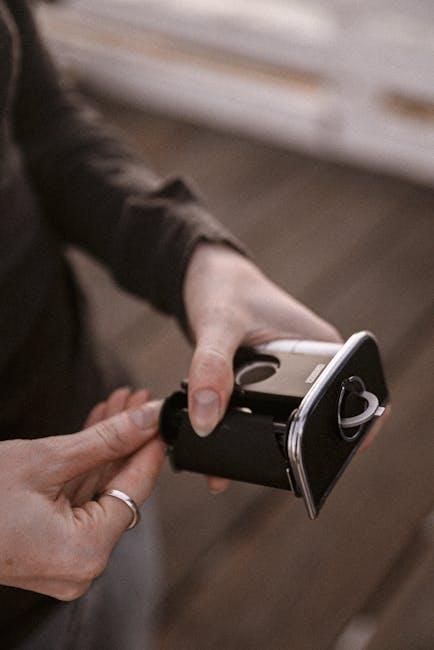The Role of Motion Capture in Next-Gen Video Creation
From blockbuster films to immersive video games and stunning digital animations, motion capture (mocap) technology is revolutionizing the way creators bring stories and characters to life. In this era of rapid technological advancement, next-gen video creation is defined by realism, fluidity, and innovation-qualities that motion capture beautifully delivers. Whether you are a filmmaker, game developer, animator, or digital content creator, understanding the role of motion capture can unlock new creative possibilities and transform your production process.
What Is Motion Capture and Why Does It Matter?
Motion capture is a technique used to record the movement of real people, animals, or objects and translate that movement into digital models. This technology allows creators to capture more realistic human expressions, gestures, and body animations than traditional hand-keyframing methods.
The rise of affordable and accessible mocap systems has enabled next-gen video creators to produce hyper-realistic animations at scale, enhancing the viewer’s immersion and emotional engagement.
Key Benefits of Motion Capture in Video Creation
- Enhanced Realism and Fluidity: Capturing human motion directly allows for naturally smooth and believable animations that are difficult to replicate manually.
- Time and Cost Efficiency: Mocap speeds up production workflows by reducing cumbersome manual animation, allowing creators to meet tight deadlines and budgets.
- Versatility Across Media: Used in films, video games, virtual reality (VR), augmented reality (AR), and even advertising, motion capture adapts to many creative environments.
- Improved Character Performance: Actors’ nuanced performances, including facial expressions and body language, can be fully captured, adding emotional depth to digital characters.
- Innovative Storytelling: Motion capture enables creators to experiment with new forms of interactive and immersive storytelling, such as real-time VR experiences and mixed reality productions.
How Motion Capture Works: The Process Explained
Most modern motion capture setups follow a multi-step process:
- Preparation: Actors or objects wear markers or suits fitted with sensors. In markerless systems, advanced cameras and software track movements without physical markers.
- Data Recording: Cameras or sensors around a motion capture studio capture the subject’s movements from multiple angles.
- Data Processing: Raw motion data is cleaned and converted into usable animation files.
- Animation Integration: The processed motion data is applied to 3D models or avatars within animation or game development software.
- Post-Production Refinement: Animators refine the captured data to add final touches, blend with other animation techniques, or sync with audio and visual elements.
Industries Leveraging Motion Capture for Next-Gen Video
Motion capture has become a cornerstone technology in various sectors of digital media:
| Industry | Use Case | Impact |
|---|---|---|
| Film & Television | Creating lifelike digital characters and complex stunts | Increases believability and reduces risk/cost of dangerous scenes |
| Video Game Development | Real-time character animations and player interactions | Improves gameplay immersion and emotional engagement |
| Virtual Reality (VR) & Augmented Reality (AR) | Tracking user movement to synchronize digital environments | Enhances presence and interactivity in immersive experiences |
| Advertising & Marketing | Crafting unique interactive commercial content | Boosts audience engagement with dynamic storytelling |
Practical Tips for Incorporating Motion Capture in Video Projects
- Choose the Right Mocap System: Depending on your budget and project scale, select between optical marker-based, inertial, or markerless mocap technologies.
- Plan for Data Cleanup: Motion capture data often requires refinement to remove noise or errors-allocate time and resources accordingly.
- Ensure Skilled Talent: Hire experienced mocap actors or train performers to deliver natural, consistent movements.
- Integrate Early: Incorporate mocap data as early as possible in production pipelines to avoid last-minute animation troubles.
- Experiment with Hybrid Techniques: Combine mocap with traditional animation for stylistic effects or exaggerated motions.
Case Study: Motion Capture Transforming a Next-Gen Game
Take the example of the critically acclaimed game “Ethereal Realms”, where developers used motion capture to breathe life into fantasy characters. By capturing realistic human movement and facial expressions with a markerless mocap system, the game team was able to:
- Create over 200 unique NPC animations
- Reduce animation production time by 40%
- Enhance storytelling through emotional character interactions
The result was an immersive world praised for its animation quality and player engagement.
Future Outlook: Motion Capture’s Expanding Role in Video Creation
As AI and machine learning merge with mocap tech, the future points to even more seamless, real-time capturing and animation generation. Expect developments such as:
- Enhanced AI-driven cleanup and prediction of motion data
- Greater use of markerless and wearable capture tech for field productions
- Integrated mocap workflows empowering virtual production stages
These advances will push the boundaries of what’s possible and make next-gen video creation more interactive, accessible, and creative.
Conclusion
The role of motion capture in next-gen video creation is paramount. Its ability to infuse digital characters with authentic movement and emotional depth elevates storytelling across films, games, VR, and more. As technology advances and becomes more accessible, mocap will continue to empower creators to push creative and technical boundaries – ultimately transforming how we experience digital narratives. Whether you’re embarking on your first mocap project or a seasoned pro, integrating motion capture technology can unlock unprecedented levels of realism and engagement in your video productions.











